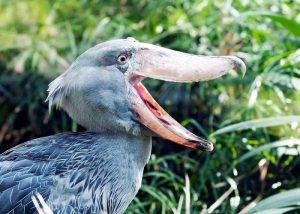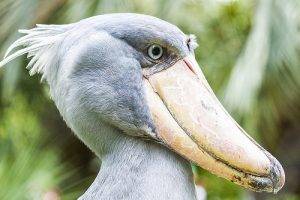The natural world is a treasure trove of extraordinary creatures, each more captivating than the last. Among the avian wonders that inhabit our planet, one bird has consistently piqued the curiosity of both bird enthusiasts and skeptics alike – the enigmatic Shoebill. In this comprehensive exploration, we’ll delve into the question that has intrigued many: Are Shoebills real? We’ll investigate the existence of these remarkable birds, their unique characteristics, habitat, and the scientific evidence that confirms their reality.
The Mystery Surrounding Shoebills
Unraveling the Myth
The Shoebill, scientifically known as Balaeniceps rex, is often shrouded in mystery and disbelief. Its striking appearance, characterized by a massive, shoe-shaped bill, has led to doubts about its authenticity. Some have even speculated that the Shoebill is a product of folklore or hoax. However, the existence of these incredible birds is well-documented.
Unique Characteristics
- Shoebill’s Bill: The most distinctive feature of the Shoebill is its massive bill, which resembles a shoe, complete with serrated edges.
- Large Size: Shoebills are one of the largest bird species in the world, with some individuals reaching heights of up to 5 feet.
- Habitat: They inhabit the swamps, wetlands, and tropical regions of central tropical Africa.
- Solitary Nature: Shoebills are typically solitary birds and are known for their patience when hunting.
Scientific Confirmation
Early Expeditions
The existence of Shoebills was first confirmed through various expeditions and encounters by European explorers in the 19th century. Specimens were collected and brought back to Europe for study and classification.
Taxonomy and Classification
Shoebills belong to the family Balaenicipitidae, which includes just one genus and one species – the Shoebill (Balaeniceps rex). This taxonomic classification solidifies their place in the avian world.
Observations and Sightings
Numerous sightings of Shoebills have been recorded by ornithologists, researchers, and wildlife enthusiasts. These observations provide irrefutable evidence of their existence.
Habitat and Behavior
Wetland Dwellers
Shoebills are primarily found in the wetlands and swamps of central tropical Africa. They prefer habitats with an abundance of water, which is essential for their diet.
Feeding Habits
Shoebills are carnivorous birds with a diet primarily consisting of fish. Their massive bill allows them to catch and consume large prey, making them apex predators in their habitat.
Unique Hunting Style
These birds are known for their patient and stealthy hunting style. They can stand motionless for extended periods, waiting for the perfect moment to strike.
Conservation Status
Vulnerable Species
Shoebills are classified as a vulnerable species by the International Union for Conservation of Nature (IUCN). Their populations are declining due to habitat loss and human disturbance.
Are Shoebills Real
Several organizations and conservationists are working diligently to protect the habitat of Shoebills and raise awareness about the importance of preserving these unique birds.
Frequently Asked Questions (FAQs)
Are Shoebills related to storks?
Despite their visual similarities, Shoebills are not closely related to storks. They belong to a unique family called Balaenicipitidae.
Do Shoebills make any vocalizations?
Shoebills are generally silent birds. They communicate through body language and movements.
What is the significance of their shoe-shaped bill?
The exact function of their bill’s unique shape is not entirely clear. It is believed to aid in catching prey, primarily fish.
Related Post:
Unveiling the Enigmatic Hoopoe: A Fascinating Journey into the Avian World
Discovering the Enchanting Endemic Birds of Hawaii
Unraveling the Mystery of Tawny Frogmouths: Are They Dangerous?
In conclusion, the answer to the question, “Are Shoebills real?” is a resounding yes. These incredible birds, with their surreal appearance and remarkable hunting skills, are indeed a part of our natural world. The skepticism surrounding their existence has been dispelled by numerous scientific expeditions, documented sightings, and their taxonomic classification. Shoebills are not only real but also an important species in the delicate ecosystems they inhabit. As they face conservation challenges, it is our responsibility to protect their habitat and ensure that future generations can marvel at the wonder of these magnificent birds.




